Madiha Batoool1* and Bilal Masood2
1Department of Chemistry, Government College University (GCU), Lahore, Pakistan
2Department of Chemistry, Quaid-i-Azam University (QUIT), Islamabad, Pakistan
*Corresponding Author:
Madiha Batoool
Department of Chemistry
Government College University (GCU)
Lahore, Pakistan
Tel: +27 (0)40 602 2439
E-mail: tweetchem56@gmail.com
Received date: November 15, 2017; Accepted date: November 22, 2017; Published date: November 26, 2017
Citation: Batoool M, Masood B (2017) Green Synthesis of Copper Nanoparticles Using Solanum Lycopersicum (Tomato Aqueous Extract) and Study Characterization. J Nanosci Nanotechnol Res Vol.1: No.1: 5.
Keywords
Copper nanoparticles; Tomato juice; Copper salt; XRD
Introduction
Nanoparticles have excellent inspiration and development of fundamental science. The size of the nanoparticle is smaller than 1 μm. Problem with the physical and chemical method is the expensive absorption of toxic chemicals. Several methods physical [1], biological, physical developed to prepare nanoparticles but unfortunately contain certain drawback [2]. The green synthesis method of production of copper nanoparticles by tomato aqueous extract is cheap and environmental friendly [3]. Biosynthesis is a recent strategy for production of copper nanoparticles. Lycopersicon esculentum contain ascorbic acid which is a powerful reducing agent and stabilizing agent. This method also avoids the outer reducing agents. Green synthesis is a novel application of nanoparticles. Tomatoes belong to nightshade family Solanaceae (Figure 1). The height of the plant is 3-5 meter [4-7].
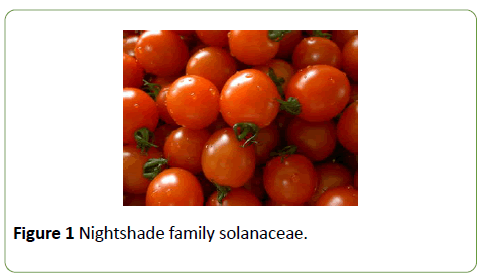
Figure 1: Nightshade family solanaceae.
Nanoparticles of copper keep large surface area, enhance activity, penetration contamination power. The present review we pointed the green production of copper nanoparticles by using tomatoes juice. Copper nanoparticles (Cu NP) are very attractive due to their unique properties [8]. Cu NP keeps high surface area to volume ratio, low cost, catalytic activity, optical properties. The main problem lies regarding preservation because they oxidized immediately in the air. Reducing agents are very expensive and toxic [9-13].
Physical and chemical methods are used techniques for preparation of Cu NP. Biological [14] techniques are used as chemical methods [3]. Chemical reduction method gives excellent results but hazardous reducing agents and effective cost make the process unimportant. Preparation of Cu NP in the green environment by using tomato juice is cost free and not toxic. Ascorbic acid in tomato juice works both as reducing and protecting agent [4].
Materials and Methods
Reagents and chemicals
Copper sulfate, tomato juice, Copper sulfate was obtained from Sigma-Aldrich Chemicals [5]. Freshly prepared triple distilled water was used throughout the experimental work.
Preparation of tomato aqueous extract
Tomatoes (Lycopersicon esculent um) were purchased from stores in the market of Lahore [6]. Tomatoes were washed with distilled water. The skin was removed and juice was collected after filtration process.
Procedure
Tomato aqueous extract were used as reducing and stabilizing agent. The extract was prepared by soaking 4 gm of tomato juice in 40 ml deionized water for overnight [8]. The extract was then crushed with mortar and pestle. The mixture was boiled for approximately 10-20 minute at 50°C-70°C. Centrifuged the extract for 15 minutes at 4000 rpm. The collected supernatant was then double filtered by Whatman filter paper [11]. The solution was diluted two-time of its volume. The different composition was prepared by using extract and distilled water. The extract was kept at 4°C for further experimental use.
Synthesis of copper nanoparticles
A 500 mL of 0.01 molar Copper (II) sulfate were (CuSO4) solution was prepared by dissolving in de-ionized water. Solutions of 0.5 M, 0.1 M, 1.5 M and 2 M tomato juice were prepared in de-ionized water. Flasks which were air tight took 50 mL of salt solution and heated continuously at 70°C in water bath shaker [12,13].
The solution of 0.5 M, 0.1 M, 1.5 M and 2.0 M tomato juice were added to each flask. Color changed from no color to yellow, orange, brown and finally, dark brown-black observed. The whole process was completed within 15 hours. The product was kept for 80 days and no sedimentation was observed [14,15] (Figure 2).
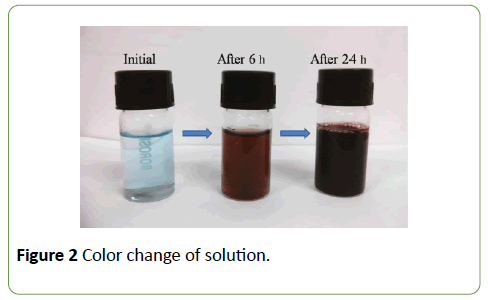
Figure 2: Color change of solution.
Characterization
The concentration of Cu NP was estimated using An AS. FTIR spectrum was accomplished and recorded with FT infrared spectrophotometer between 4000 and 370 cm-1. The size of produced nanoparticles was characterized by (XRD), SEM.
Results and Discussion
Atomic absorption spectrometry
A sample of 0.01 M prepared Cu NPs solution from each flask was obtained and diluted to 50 mL by adding de-ionized water. The wavelength of Atomic Absorption Spectrometer kept at 320 nm. The presence of copper and the Beer- Lambert's laws proved that the concentration of Cu NPs increased in different concentration samples. It analyzed that the concentration of Cu NPs increased when the concentration of tomato juice increased (Figures 3 and 4).
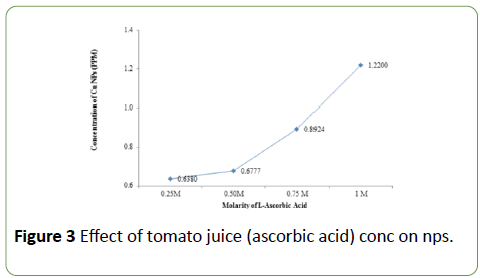
Figure 3: Effect of tomato juice (ascorbic acid) conc on nps.
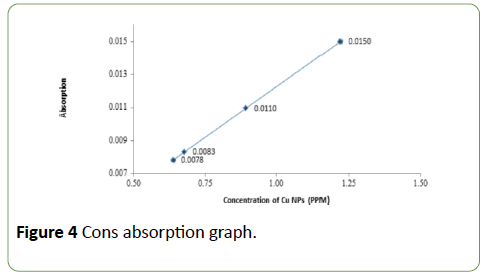
Figure 4: Cons absorption graph.
F T-infra red (FT-IR) spectrometry
The correlation of tomato juice and Cu nanoparticles and mixture changes were analyzed by FT-IR spectrometry.
The spectrum of tomato juice proves that the stretching vibration of C-C double bond and the peak were at about 1674 cm-1. The peaks due to hydroxyl, the scissor bending vibration of molecular water, acidic asymmetric stretch and C-H deformations of -CH2 or -CH3 groups also observed during the reaction (Figure 5).
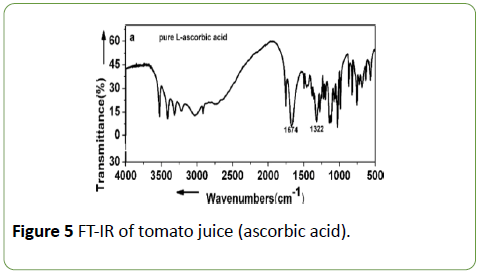
Figure 5: FT-IR of tomato juice (ascorbic acid).
X-ray diffraction (XRD)
The XRD pattern of the Cu nanoparticles is shown in Figure 6. It is observed that there are broader and less intense peaks in the spectrum. Nano-particles sample is made up of the very small crystallite. The broadness of the peak can be used to calculate the average crystalline size of the Cu NPs using (D=0.90 λ/βcosθ) 0.90 is shape factor, λ is the wavelength of the X-rays and taken as 0.15 Å (Table 1). Figure 7 shows the relationship between Cu NP and absorption and it is clear that the absorption increases as the nanoparticles concentration increases.
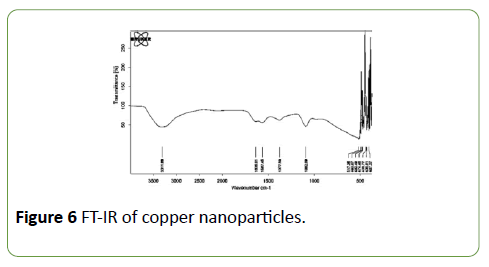
Figure 6: FT-IR of copper nanoparticles.
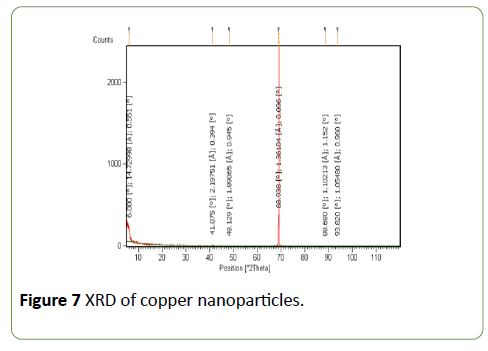
Figure 7: XRD of copper nanoparticles.
| Experimental diff. angle (20 degrees) |
Standard diff. in angle (20 in degree) |
HCl (Planes) |
| 41.742 |
43.19 |
-111 |
| 48.628 |
50.3 |
-200 |
| 69.27 |
74.3 |
-220 |
Table 1: Solvent deasphalting (SDA) of copper nanoparticles.
The results are in good agreement with the reported XRD pattern of Cu nanoparticles. The average crystalline size of the Cu nanoparticles for 0.5 M tomato juice was calculated for the Cu sample is in the range of 40-70 nm.
Stability of Cu nanoparticles
The prepared copper nanoparticles are the stable. Capping agents (PVP) and PEG are used to reduce contamination which is costly. Ascorbic acid in tomato juice act as reducing and capping agent in this research.
Cu NP suspensions were kept without any further reaction for 80 days no sedimentation was observed. This proved that the Ascorbic Acid in tomato juice has stabilizing power.
Conclusion
The tomato juice act as reducing agent for copper nanoparticles prepared using reduction of copper sulfate. The nanoparticle size is 40-70 nm with uniform distribution. It also observed that by increasing the concentration of tomato juice the concentration of copper nanoparticles is also increased with the same concentration of salt confirmed by AAS. The synthesized copper nanoparticles are of greater stability. The stability period is more than 80 days without contamination. This green method of preparation of copper nanoparticle is economical and cheap with no hazardous effect.
References
- Feldheim DL, Foss JR (2002) Metal nanoparticles; synthesis, characterization, and applications, Marcel Dekker Incorporated, New York, USA.
- Jana NR, Wang ZL, Sau TK, Pal T (2000) Seed-mediated growth method to prepare cubic Copper nanoparticles. Current Sci 79: 1367-1370.
- Yeh MS, Yang YS, Lee YP, Lee HF, Yeh YH, et al. (1999) Formation and characteristics of Cu colloids from CuO powder by laser irradiation in 2-propanol. J Phys Chem-B 103: 6851-6857.
- Liu Z, Bando Y (2003) A novel method for preparing copper nanorods and nanowires. Advanced Materials 15: 303-305.
- Matsui K, Grigoriu C, Kubo H, Masugata K, Shimotori Y (1995) Synthesis of nanosize powders of alumina by ablation plasma produced by intense pulsed light-ion beam, App Phy Letr 67: 1214-1216.
- Oleszaka D, Shingu PH (1996) Nanocrystalline metals prepared by low energy ball milling. J App Phy 79: 2975.
- Wang Y, Chen P, Liu M (2006) Synthesis of well-defined copper nanocubes by a one-pot solution process. Nanotechnology 17: 6000-6006.
- Molares MET, Buschmann V, Dobrev D, Neuman R, Scholz R, et al. (2001) Single-crystalline copper nanowires produced by electrochemical deposition in polymeric ion track membranes. Advanced Materials 13: 62-65.
- Takayama S, Link G, Sato M (2004) Microwave and radio frequency applications, in: proceedings of the fourth world congress on microwave and radio frequency applications. 311-318.
- Chu Y, Zhuo Y, Dong L, Liu Y, Li M (2007) Controlled synthesis of various hollow Cu nano/microstructures via a novel reduction route. Adv fun mat 17: 933-938.
- Tan YW, Dai XH, Li YF, Li Y (2003) Preparation of gold, platinum, palladium and silver nanoparticles. J Mater Chem 13: 1069-1075.
- Chou KS, Ren CY (2000) Synthesis of nanosized silver particles by chemical reduction method. Mater Chem Phys: 64: 241-246.
- Lee Y, Choi JR, Lee KJ, Stott NE, Kim D (2008) Large-scale synthesis of copper nanoparticles by a chemically controlled reduction for applications of inkjet-printed electronics. Nanotechnology 19: 41.
- Leopold N, Lendl B (2003) A new method for fast preparation of highly surface-enhanced raman scattering (sers) active silver colloids at room temperature by reduction of silver nitrate with hydroxylamine hydrochloride. J Phys Chem B 107: 5723-5727.
- Xiong J, Wang Y, Xue Q, Wu X (2011) Synthesis of highly stable dispersions of nanosized copper particles using L-ascorbic acid. Green Chem 13: 900-904.








